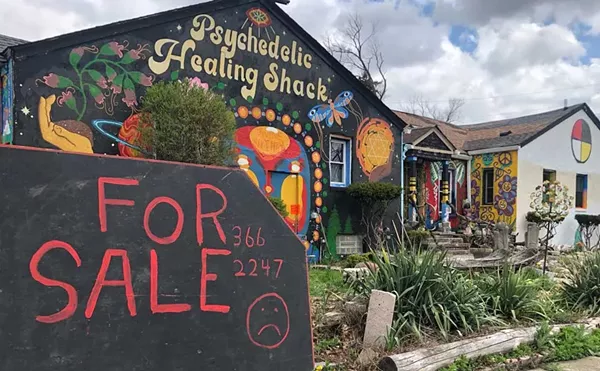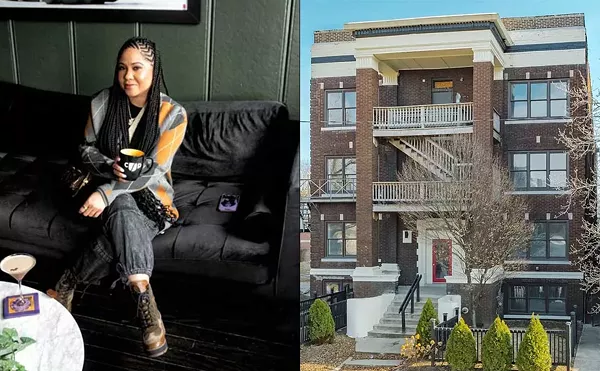
Audio By Carbonatix
[
{
"name": "GPT - Leaderboard - Inline - Content",
"component": "35519556",
"insertPoint": "5th",
"startingPoint": "3",
"requiredCountToDisplay": "3",
"maxInsertions": 100,
"adList": [
{
"adPreset": "LeaderboardInline"
}
]
}
]
The way Jarret Haynes sees it, every downtown deserves a historic theater. As the current director of Flint's Whiting venue, he has studied theaters closely. At one point, he says, virtually every major city had one — and for a reason. The model of a having a large theater wrapped with retail on the ground floor and office space on the second floor worked. "That was a model that was strategic because it created an ecosystem within the facility itself, where the activity feeds off of itself," he says.
But a lot of these theaters have since closed. Such is the case with Flint's Capitol Theatre, which has been dormant for nearly 20 years. Originally built in 1928 as a vaudeville theater, it would later become a moviehouse and, eventually, a live music venue that hosted acts like AC/DC, Black Sabbath, Rage Against the Machine, Ice-T, Green Day, and the Ramones.
Now, in a partnership between the Whiting and Flint nonprofit the Uptown Reinvestment Corporation, the theater is poised to have its second act. The rehab was announced in 2015, with construction set to be complete by the end of this year.
"I can't talk to people in the community without everybody having some story about their first time in the Capitol, or their memory of going to the Capitol with their father or grandfather or mother or brothers or sisters," Haynes says. "As a nonprofit performing arts presenter, to be given the opportunity to return this venue back into the fabric of the community is very exciting."
Fortunately, Haynes says, the theater's previous owners managed to minimize damage by keeping the heat on and keeping the roof sealed — both helped keep the building from suffering from water damage. That leaves Haynes to focus on updating the theater's technical rigging as well as its programming. He says he anticipates the theater's capacity to be somewhere around 1,600 seats. With the Whiting's 2,000 seats, programming won't be a matter of crowd sizes so much as it will be in optimizing the theater's curved, balcony set-up over the Whiting's rectilinear layout.
"As a programmer, the ability and the opportunity to present things in either venue that plays to the strength of the venue is really exciting for us," Haynes says. "I think what you'll see a lot there is a lot of popular music, maybe some modern dance, and certainly some children's shows, which work well in an intimate venue." Part of the restoration also involves building a 150-seat "black-box" performance space in the basement, which will bring more options to the city. The theater is expected to open to the public by early 2018.
The Capitol Theatre is just the latest historic Michigan theater to get a rehab. Others include:
Emerald Theatre (Mount Clemens): Previously known as the Macomb Music Theater, the Emerald has been closed since 2014, during which time it suffered heavy water damage when a pipe burst. The 1,600-seat venue was purchased by new owners in 2016, who restored its name to its original Emerald Theatre, changed its programming from that of a nightclub to more family-friendly fare, and converted an attached restaurant into a Mexican eatery called El Rey.
Flagstar Strand Theatre for the Performing Arts (Pontiac): Pontiac's historic theater reopened in January following a $20 million renovation. Originally built in 1921 as a vaudeville theater, by the '80s it earned a seedy reputation as an adult film moviehouse and was shut down. Now, the 895-seat theater hosts diverse music, comedy, and dance acts. Next-door is an outpost of Detroit's famed Slows Bar BQ.






